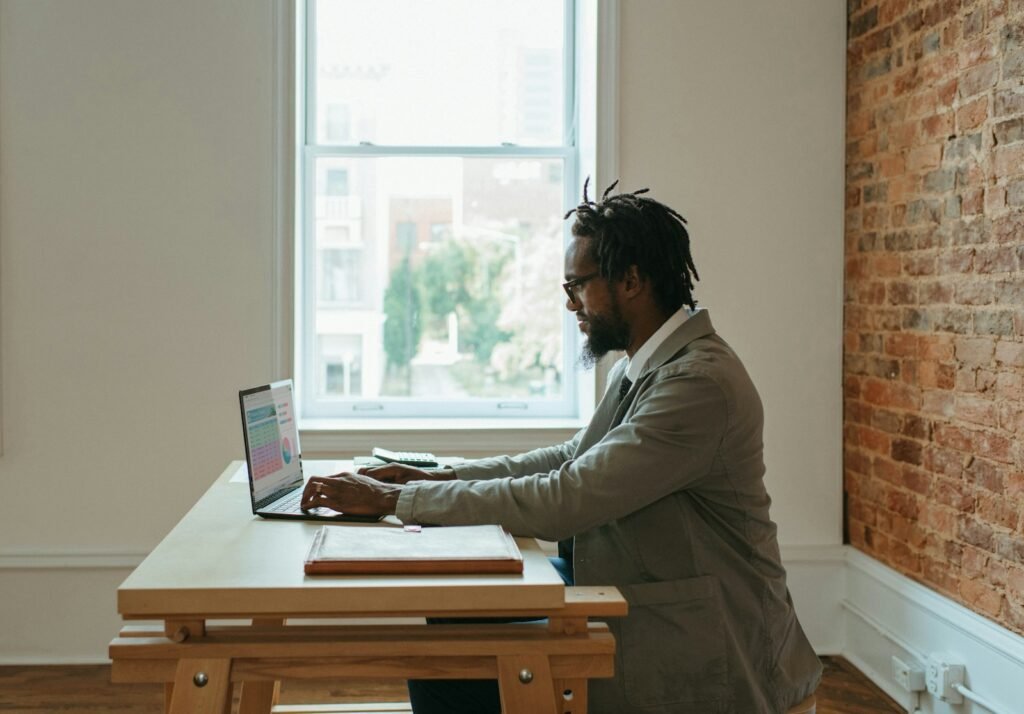
Why Transitions Matter in Essays
Imagine, if you will, the intricate dance of transitions in essays. They are like hidden gems within a treasure trove unnoticed individually, yet essential for the overall brilliance to shine through. One moment you’re gliding effortlessly through an essay, and suddenly you stumble upon a sharp shift in direction or mood. It’s as disorienting as stepping from a bright sunny day into a raging thunderstorm without so much as an umbrella for shelter bewildering to say the least.
Enter transitions, dear readers. They are your guiding light in the labyrinth of ideas, seamlessly leading you from one concept to another with finesse and grace. Think of them as your trusty tour guide navigating you through the writer’s argument like an expert explorer in uncharted territory.
Have you ever experienced the frustration of following a GPS that constantly reroutes you without warning? Essays lacking proper transitions evoke that same sense of bewilderment leaving you adrift and struggling to decipher the author’s message. In the wise words of Maya Angelou, “We delight in the beauty of the butterfly but rarely admit changes it has gone through to achieve that beauty.” Transitions act as catalysts for transformation within your essay, molding scattered thoughts into a harmonious and captivating narrative.
So buckle up, dear readers! Prepare yourselves for an enchanting journey into the realm of transitions in essays for I assure you, it is truly a game-changer waiting to be unraveled.
Connecting Ideas Seamlessly
Crafting a well-connected essay is akin to constructing a sturdy bridge, where the transition from one point to the next should feel smooth and effortless. Picture yourself as a guide leading your reader through the intricate pathways of your argument, ensuring they don’t get stranded on confusing detours. As Mark Twain wisely put it, “The difference between the almost right word and the right word is really a large matter it’s the difference between the lightning bug and the lightning!”
To achieve this seamless connection, think of intertwining your ideas like a choreographed dance routine, with each step flowing effortlessly into the next. Avoid abrupt jumps or awkward pauses that can disrupt the rhythm of your writing. Remember Maya Angelou’s words: “All great achievements require time.” So take your time to craft transitions that not only connect your ideas but also enhance the overall flow of your essay.
Guiding the Reader Through Your Argument
Navigating the reader through your argument is absolutely crucial, wouldn’t you agree? Picture yourself leading a group on a challenging hike through the rugged terrain of the Grand Canyon – simply gesturing vaguely towards the scenic overlook and crossing your fingers wouldn’t cut it, right? Of course not! You’d provide clear directions, maybe throw in a joke or two to boost morale, and ensure everyone stays on track. Similarly, in your essay, you aim to smoothly guide your reader from point A to point B without abandoning them in a rhetorical wasteland.
Just as a GPS effortlessly steers you through city streets, your transitions should seamlessly guide your reader through your writing. Abrupt shifts in thought akin to an unexpected plot twist in a low-budget film are definitely not what you’re aiming for. Instead, gently lead them from one idea to the next, ensuring they never feel disoriented or puzzled. So go ahead and sprinkle those transition words and phrases throughout your essay like a skilled chef adding just the right amount of seasoning – not too little, not too much, but just enough to enhance the flavor of your writing.
Maintaining Coherence in Your Writing
Have you ever encountered an essay that resembles a jigsaw puzzle with missing pieces? It’s like wandering through a garden of ideas, only to suddenly find yourself lost in a thicket of disjointed thoughts. Imagine trying to follow a map torn to shreds by a mischievous cat – it’s pure chaos!
So, how can we maintain coherence? Treat your essay as a story, with each paragraph serving as a plot twist in the grand narrative of your argument. You wouldn’t switch from a heartwarming rom-com to a spine-tingling thriller without warning, right? Transition words and phrases act as trusty signposts guiding your reader through the labyrinth of your mind. As Anne Lamott wisely said, “Good writing is about letting go of fear and making room for coherence.” Don’t abandon your readers in the wilderness of your words – provide them with a roadmap to navigate the complexities of your brilliant ideas.
Enhancing the Flow of Your Essay
The art of essay flow, oh how it mystifies and enchants! It’s a touch of sorcery that transforms the ordinary into the extraordinary, whisking your reader away on a mesmerizing adventure. Imagine yourself as a literary wizard, skillfully intertwining your thoughts with finesse and creativity. As Anne Lamott wisely said, “Good writing is about shedding fear and embracing vulnerability.” So let us delve into the realm of sprinkling that magical stardust across your words.
Picture your essay as a river, each paragraph a tributary seamlessly merging into the next. You wouldn’t want your readers to feel lost in a whirlpool of disconnected ideas, would you? Transition words are like trusty oars guiding you through this metaphorical waterway of language. In the words of Ernest Hemingway, “All good books share one trait – they ring truer than reality itself.” So grab those transitional phrases like “furthermore” or “in addition,” and steer your audience through the twists and turns of your argument with elegance and finesse. Remember, the goal is to make their journey smooth and delightful, akin to gliding over velvet on a serene ride.
Transition Words and Phrases to Use
Transition words are like the enigmatic sorcery of essay writing – they infuse coherence and reason into your chaotic whirlwind of thoughts, causing your argument to gleam like a meticulously cut jewel. As the iconic William Shakespeare supposedly pondered, “To transition or not to transition, that is the query.” Well, maybe he didn’t exactly utter those words, but you catch my drift.
Visualize your essay as an electrifying rollercoaster journey, where each transition word serves as the secure safety net preventing your reader from plummeting into bewilderment. Whether you’re hurtling through the peaks of a brilliant revelation or trudging through the valleys of an opposing viewpoint, transition words stand by your side as loyal companions, illuminating the path ahead. So why not captivate your audience with a sprinkle of “furthermore” or a dash of “on the other hand”? Your essay will shower you with gratitude, and your reader will forever appreciate the seamless navigation through your expertly constructed argument.
Avoiding Common Mistakes in Transitions
Ever felt more shaken than a sudden twist in a movie? Poorly executed transitions in an essay are like hitting a speed bump on the information highway disrupting the flow and leaving readers feeling like they’re on a rollercoaster of confusion. Aspiring writers, let’s talk about avoiding common blunders when it comes to transitions.
Imagine cruising down the road of your argument, only to abruptly swerve into a new paragraph without warning. It’s like turning a corner and facing a wall. Transitions act as your GPS in the land of essays, smoothly guiding readers from one idea to the next. Remember Mark Twain’s words: “The difference between the right word and the almost right word is the difference between lightning and a lightning bug.” Lead your audience with finesse from point A to point B; don’t leave them in darkness.
Creating Smooth Transitions Between Paragraphs
Navigating the vast expanse of your essay can be a daunting task, like traversing through a labyrinth of thoughts and ideas. It’s easy to get lost in the maze of words, unsure of where one paragraph ends and the next begins. But fear not, for with each transition, you are guiding your reader on a journey through the unknown, unraveling mysteries and unveiling truths along the way.
Picture yourself as a master magician, weaving spells with your words to seamlessly transport your reader from one realm to another. Create an illusion so mesmerizing that they are spellbound by your prose, eagerly anticipating what wonders lie ahead. Like a symphony conductor orchestrating harmonious melodies, lead your audience through crescendos and diminuendos as you transition from one paragraph to the next.
In this intricate dance of language and ideas, embrace the unpredictability and spontaneity that comes with transitioning between paragraphs. Surprise your reader with unexpected twists and turns that leave them breathless with anticipation. Just as life is full of surprises and uncertainties, let your essay reflect this chaotic beauty by embracing the burstiness of transitions.
So go forth boldly into the uncharted territory of transitional writing, daring to defy conventions and norms. Embrace perplexity as a challenge rather than an obstacle, for it is in these moments of uncertainty that true creativity shines brightest. And remember – smooth transitions may be like glue holding your essay together, but it is in those moments of burstiness that magic truly happens.
Signaling Shifts in Your Argument
Transitions, oh transitions the silent saviors of essays. Like a seasoned tour guide navigating through a bustling city, they lead the reader through your argument with finesse and expertise. With the agility of an acrobat, transitions allow you to seamlessly move from one idea to the next, without causing your reader to panic or fall into a state of boredom. As Hemingway once famously stated, “All you need is one true sentence.” But I argue that all you truly need is just one well-placed transition to maintain the flow of your argument.
Imagine yourself as a conductor orchestrating a symphony. Just like how a simple baton signal can keep musicians in line, transitions act as signals guiding your argument along its intended path. They are like seasoning in a gourmet dish enough to enhance but not overpower. So writers, let your transitions gracefully pirouette across the pages of your essay, leading readers through the maze of your thoughts with elegance and precision. Remember Angelou’s words: “All great achievements take time.” Patiently crafting thoughtful transitions will undoubtedly result in an essay worth relishing.


